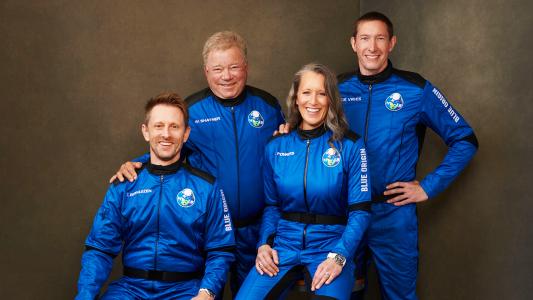It’s a sci-fi plan straight out of Armageddon, but the “just nuke it” approach to protecting Earth from asteroids may just work.
According to a new study out of Lawrence Livermore National Laboratory, if we don’t have enough time to deflect an asteroid heading to Earth, blowing it up with a nuclear bomb really could stop it — but the size does matter.
Why it matters: Asteroids are rocky remnants from our solar system’s formation — after the gas and dust settled into planets and moons, they were what was left over, like the extra screws you have after assembling IKEA furniture.
There are millions of asteroids orbiting the sun, and while almost all will never come anywhere near Earth, if a big enough space rock did hit the planet near an inhabited area, it could cause massive devastation. If it’s large enough, it could even cause mass extinctions. (It’s happened a few times before.)
Nuking the asteroid just two months before the expected impact would cause 99.9% of its mass to miss the Earth.
Planetary defense: To avoid this fate, NASA and other space agencies are not only tracking asteroids, looking for any that might pose a threat, but also exploring ways to stop an asteroid heading to Earth.
So far, they’ve come up with a couple of approaches to planetary defense: deflection and disruption.
Helpful nudge: A deflection defense involves hitting an asteroid with something powerful enough to change its trajectory. In November, NASA will test its viability by launching a small space probe intended to collide with a small, non-threatening asteroid about a year from now.
This option is most likely to be successful if we have a long lead time before an asteroid heading to Earth is expected to hit the planet (we’re talking decades, ideally).
The nuclear option: A disruption defense would involve blowing up an asteroid heading to Earth before impact. This could be our best option if we don’t have a lot of warning about the asteroid — but it’s been difficult for scientists to determine just how viable it is.
“One of the challenges in assessing disruption is that you need to model all of the fragment orbits, which is generally far more complicated than modeling a simple deflection,” lead author Patrick King said.
If those calculations are wrong, we might blow up the single asteroid heading to Earth just to find ourselves threatened by several smaller, but still dangerous, space rocks.
Space simulations: For a new study, King and his colleagues developed software to model what would happen if we tried to “disrupt” a 328-foot-wide asteroid heading to Earth with a 1-megaton nuclear bomb.
An asteroid of that size would be comparable to the rock that caused the Tunguska event in 1908 — the largest impact recorded by humans — which leveled 2,000 square kilometers of Siberian forest. (It is also around the size of the near-Earth asteroid that appeared “out of nowhere” in 2019 and surprised NASA, passing within just 73,000 kilometers of Earth.)
They gave their theoretical asteroid five different potential orbits, and determined that nuking it just two months before the expected impact would cause 99.9% of the asteroid’s mass to miss the Earth, regardless of its original orbit.
However, when it comes to the truly massive asteroids, like the six-mile wide rock that killed the dinosaurs, nukes are, unfortunately, hopeless (sorry, Bruce Willis). For giant rocks, it’s probably deflection or nothing.
We’d love to hear from you! If you have a comment about this article or if you have a tip for a future Freethink story, please email us at [email protected].


